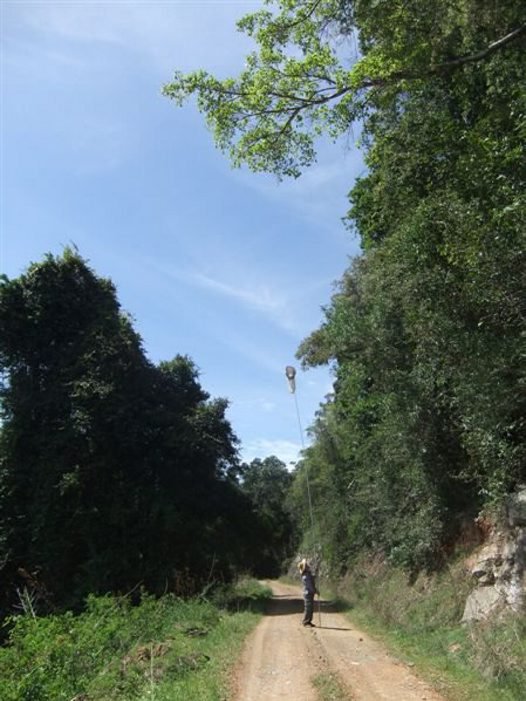Who are the pollinators in Australia’s subtropical rainforests?
For almost 20 years my colleague Paul Adam (University of New South Wales) and I have been investigating one of the most intimate yet essential of natural phenomena – the pollination ecology of plants.
And in particular, the pollination of trees and shrubs in the scattered, and often remnant, subtropical rainforests of northern New South Wales (NSW); many of which are of such significance that they have been accredited with World Heritage status.
In our research, we have found that in NSW the vast majority of woody rainforest plants, be they towering canopy trees, or diminutive shrubs of the shaded understorey, are pollinated solely by a diverse range of small insects, most of which are less than 5mm in length.

Myrmecia nigrocincta ants foraging on inflorescence of Alectryon coriaceus (family Sapindaceae) in a lowland subtropical rainforest remnant.
Image: Geoff Williams© Geoff Williams
And though the popular view is that birds and bats are important pollinators, rather few flowers encountered in subtropical rainforests are adapted to be pollinated specifically by vertebrates of any kind. Even native bees, as distinct from the introduced honey bee Apis mellifera, don’t play the significant pollinator role that the public ascribe to bees in general (but could this reflect competitive displacement by Apis).
Bats, specifically flying-foxes, as pollinators in subtropical rainforest are normally totally absent, restricting their visits to flowering plants in eucalypt forests and open woodlands, and even where birds, such as various honeyeaters, visit flowering subtropical rainforest plants their choice of plants is very broad. Often honeyeaters don’t forage for nectar at all, instead their visits being aimed at feeding on insects, or developing fruit.
Relatively few flowering subtropical rainforest trees and shrubs have large, bright or resplendent flowers. Instead their flowers are usually small in size, and white or cream coloured, individually with open floral structures that are accessible to a range of visitors.
Individually, such flowers produce only small quantities of nectar and/or pollen; this restriction in resource availability alone acting as an ecological ‘filter’ against animals that require large quantities of floral resources to survive.

The heights that mortal pollination ecologists sometimes aspire to. Here Geoff Williams is attempting to sample what is on the flowers of 'Silver Croton' Croton insulare, in a dry rainforest stand south of Taree on the Mid North Coast of New South Wales.
Image: Thusnelda Williams© Thusnelda Williams
The insects participating in generalist pollination strategies are primarily beetles, flies, wasps, and to a degree, bees. However, we also discovered a few instances where ants appear to be important in facilitating pollination, this being contrary to the prevailing view of most pollination ecologists that ants are poor pollinators at best.
Many of the smaller insects found at flowers are relatively inefficient pollinators, and their frequency of movement between and within flowering plants is probably low. Therefore, as subtropical rainforest fragments are becoming increasingly isolated, ensuring that pollen from one plant reaches another individual of the same species is likely to become increasingly challenging.
Dr Geoff Williams
Research Associate











